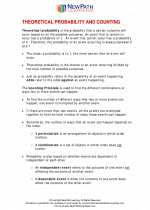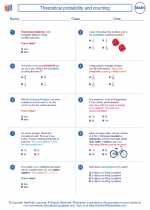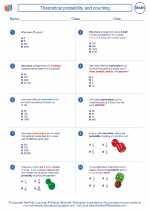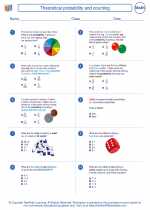Histogram
A histogram is a graphical representation of the distribution of numerical data. It is a type of bar graph that displays the frequency or proportion of data within certain intervals or ranges. Histograms are used to visualize the shape, center, and spread of the data, and to identify any patterns or outliers.
Components of a Histogram
There are several key components of a histogram:
- Bars: The bars in a histogram represent the intervals or ranges of the data, and their heights correspond to the frequency or proportion of data within each interval.
- Intervals or Bins: These are the ranges of values that the data is divided into for the purpose of creating the histogram. The intervals should be of equal width and non-overlapping.
- Frequency: The frequency of a particular interval is the number of data points that fall within that interval.
- Title and Axes: A histogram should have a descriptive title, as well as labeled x and y axes that indicate the variable being measured and the frequency or proportion, respectively.
- Relative Frequency: In addition to the frequency, the proportion of data points within each interval can be used to create a relative frequency histogram.
Creating a Histogram
To create a histogram, follow these steps:
- Choose the appropriate number of intervals or bins for the data.
- Determine the range of the data and calculate the width of each interval.
- Create a frequency table that lists the intervals and the frequency of data points within each interval.
- Draw the x and y axes, and label them appropriately.
- For each interval, draw a bar whose height corresponds to the frequency or proportion of data within that interval.
- Add a title and a key if necessary.
Interpreting a Histogram
When interpreting a histogram, consider the following:
- Shape: Is the distribution symmetric, skewed to the left or right, unimodal, bimodal, or multimodal?
- Center: Where is the center of the distribution located?
- Spread: What is the range of the data and how spread out are the values?
- Outliers: Are there any data points that fall far from the main concentration of the data?
- Trends and Patterns: Are there any noticeable trends or patterns in the data?
Study Guide
To study histograms, it's important to understand the following concepts:
- How to create a frequency table from given data.
- How to determine the appropriate number of intervals or bins for a given set of data.
- How to calculate the width of each interval.
- How to interpret the shape, center, and spread of a distribution based on a histogram.
- How to identify and analyze outliers in a histogram.
Additionally, practicing with sample problems and real-world data sets can help reinforce your understanding of histograms and their interpretation.
By mastering the concepts and techniques related to histograms, you'll be well-equipped to analyze and interpret various types of data distributions in the future.
.◂Math Worksheets and Study Guides Eighth Grade. Theoretical probability and counting

 Worksheet/Answer key
Worksheet/Answer key
 Worksheet/Answer key
Worksheet/Answer key
 Worksheet/Answer key
Worksheet/Answer key
